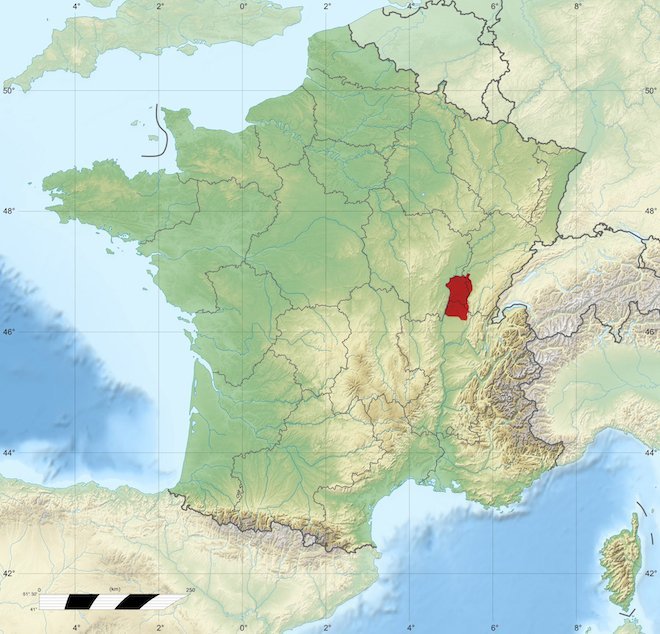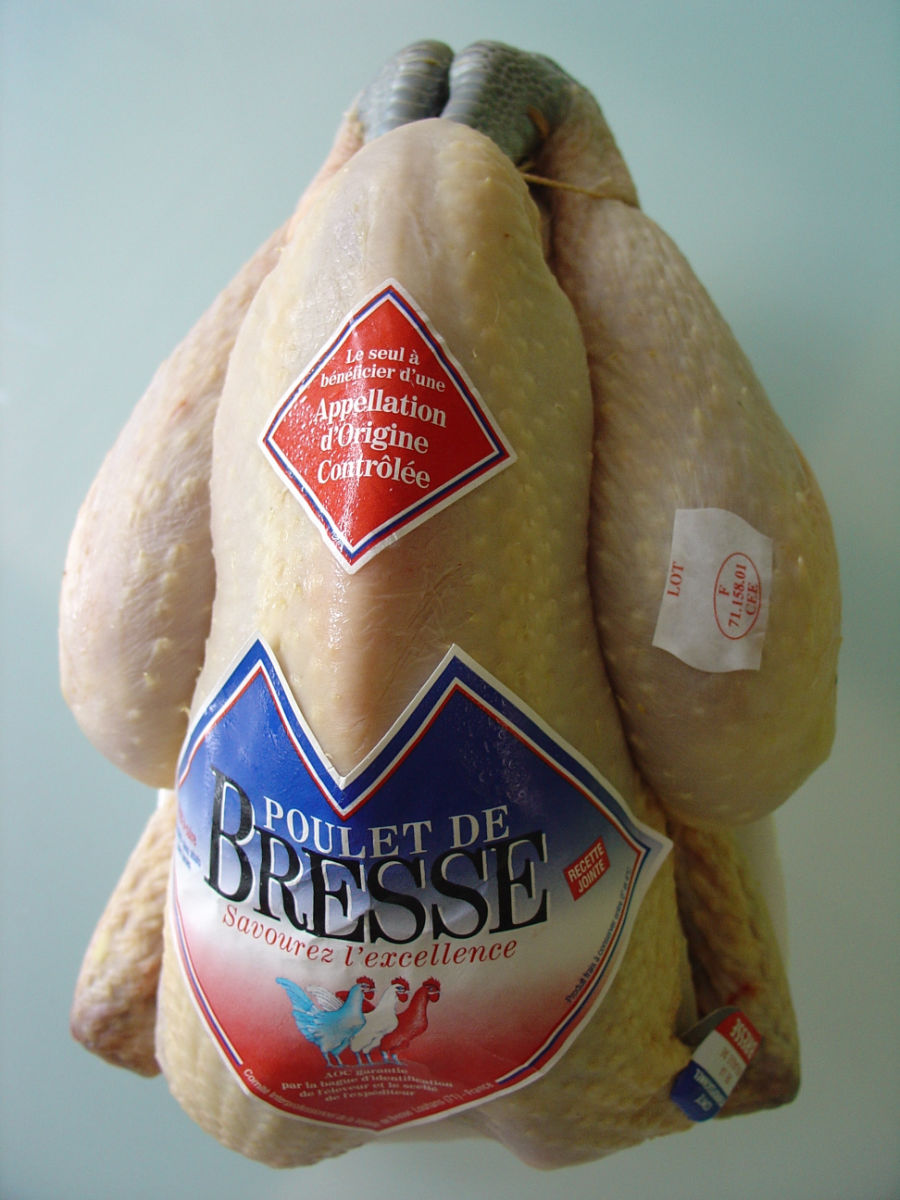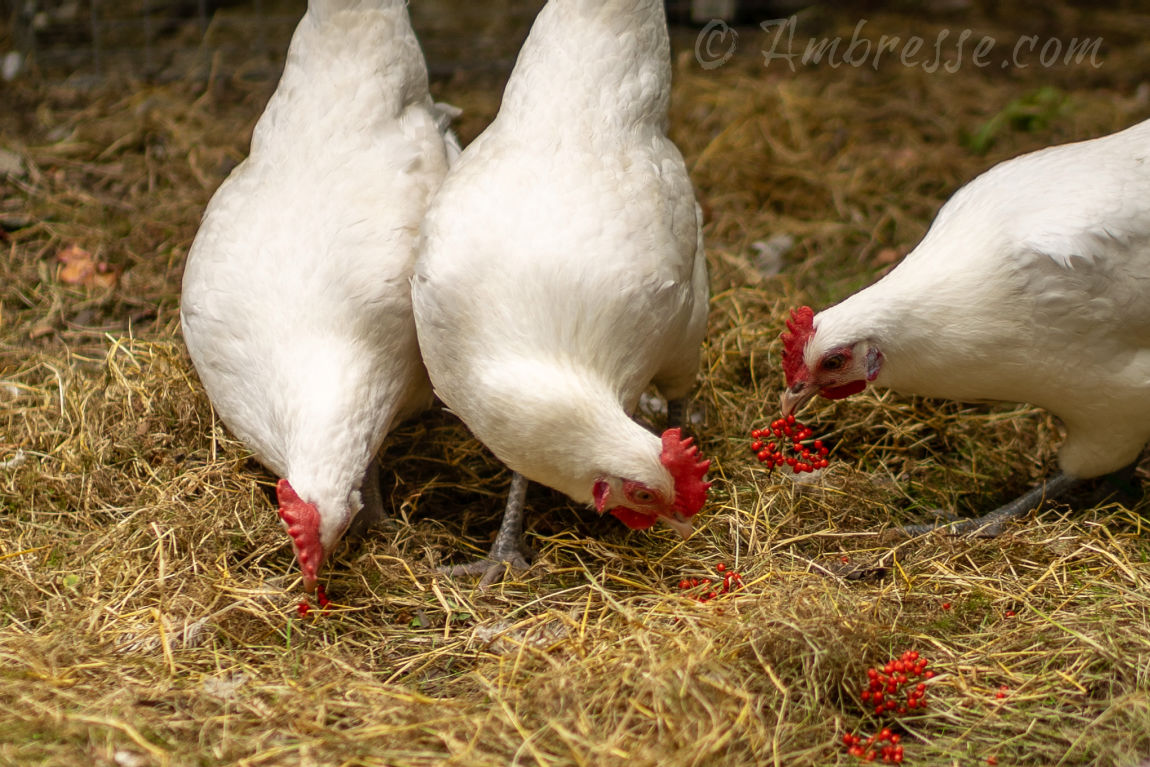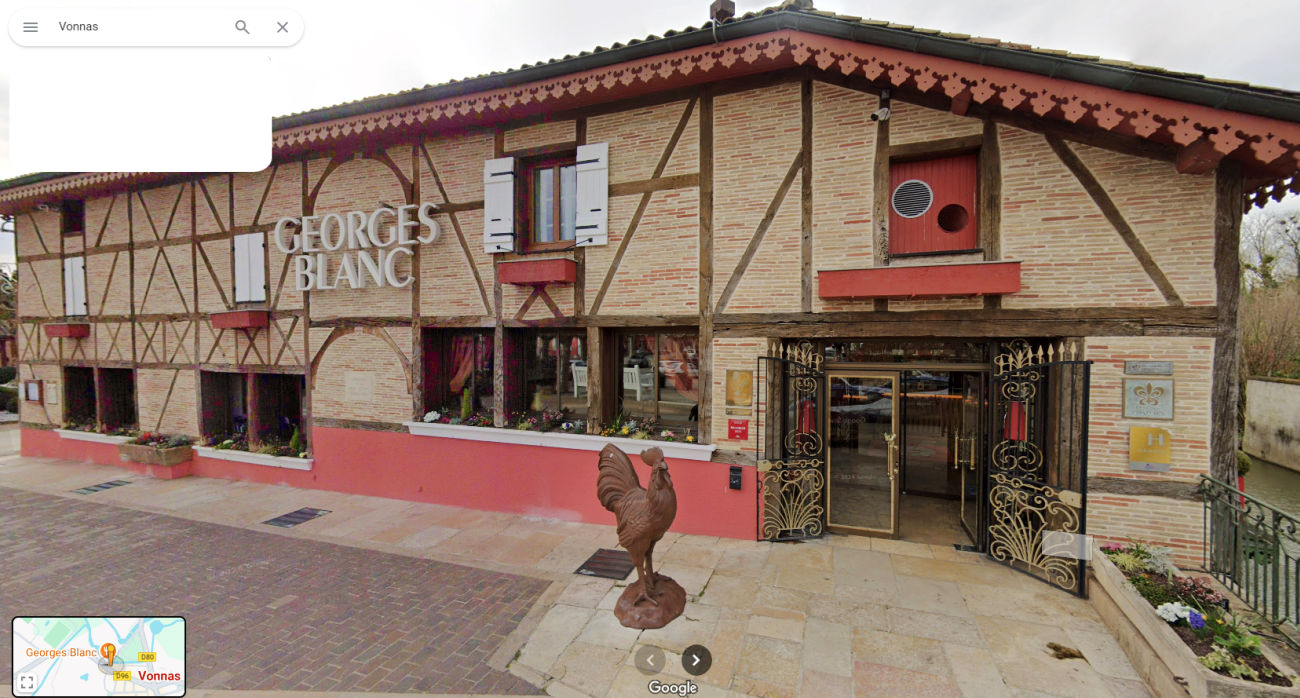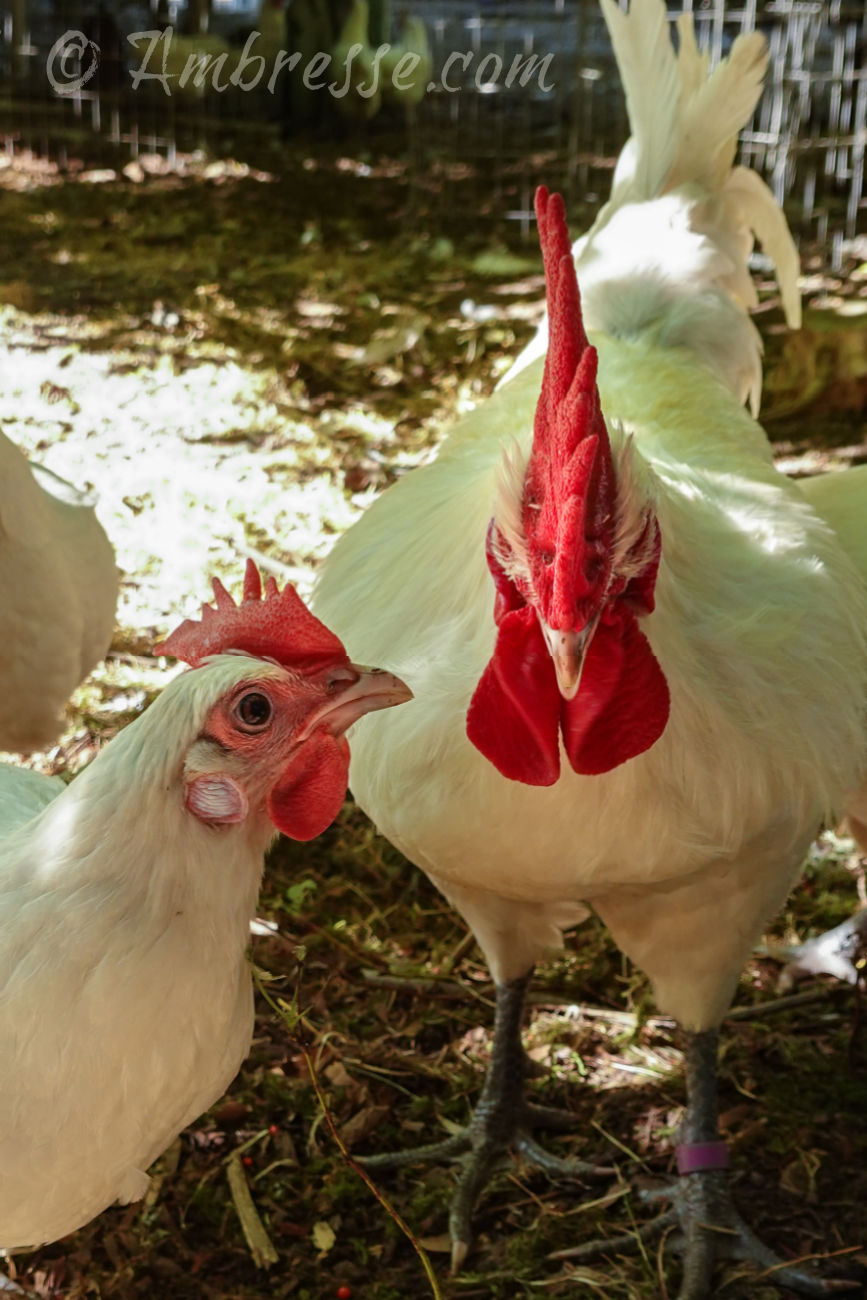French Bresse Chicken Breed History
French Bresse Chickens: A history of the French Bresse breed of chickens, from their ancient origins in old France to their arrival in North America as an intriguing dual-purpose heritage chicken.
Bresse Chickens in Roman Times
The earliest parts of the story date back before the common era. According to French historians, three specific varieties of chickens in the Bresse region can be dated to circa 400 BC.
The Bresse Valley is a narrow swath of green fields and woodlands very typical of Europe. It sits at the foot of the Jura Mountains to the east, a pocket of valley floor measuring roughly 60 miles by 25 miles. That's it.
In those days, the Bresse valley changed hands periodically due to invading tribes, who brought with them a reliable food source - flocks of chickens. The people of the Bresse valley had access to each successive flock of chickens, adding some to their own flocks via barter or purchase as invading tribes came and went. They kept the best chickens and ensured the best genes remained permanently in their flocks.
Chickens served as legal tender when appropriate. Farmers were known to settle debts with chickens. Poultry were also used from time to time as gifts to appease the latest invaders.
Black, Grey, and White Bresse Chickens
Interestingly, black, grey, and white chickens were already aggregating to the same regions in which they would be found two millennia later.
The people of Louhans toward the north of the Bresse valley were raising black chickens, the "Noire de Louhans."
Bourg-en-Bresse in the south of Bresse was the place to find Grey Bresse (silver pencilled).
The "Blanche de Bény" (white chickens of Bény), were preferred in the town of Bény, and eventually became the large all-white Bresse chickens well known today in France.
Somehow, fortuitously and with persistence over the years, decades, and then centuries, farmers were able to fix all the best utilitarian traits into the chickens of the Bresse valley: Rapid growth rate, heavy egg-laying, and the coup de grâce - tender, flavorful meat with the rare trait of fat-marbling.
All of these traits became synonymous with the chickens of Bresse.
The flocks of French Bresse chickens dotting the valley's rural pastures could be relied upon to produce chickens all manifesting the above dual-purpose traits.
French Bresse Chickens as a Breed Debuted in 1591
In 1591, the Marquis of Treffort and his men drove away from Bresse an invading army from Savoy. To show their gratitude, the inhabitants of Bourg-en-Bresse brought to the Marquis their best -- twenty-four fatted Bresse chickens.
This note is found in the annals of the town of Bourg-en-Bresse, and is considered the first mention of a specific breed of French Bresse chickens.
King Henry IV of France LOVED to Dine Deliciously
By the year 1600 AD, the moist flavor of Bresse poultry had caught the attention of kings. King Henri-Quatre (IV) of France, rumor has it, tried to figure out how he could take lengthy stays in Bresse because he loved the richness of Bresse chicken.
Historians acknowledge that the details around this story are uncertain. However King Henri did vow to ensure that the French people would always be able to puisse mettre la poule au pot ("put a hen in the pot").
By the early 1800s, the Bresse chicken had gained the well-deserved attention of the French gastronome Jean Anthelme Brillat-Savarin, who penned his famous book, The Physiology of Taste in 1825. (It is still in print!)
In it, he poetically described the Bresse chicken as the “queen of poultry,” and the “poultry of kings.” Since he lived nearby, it is an easy guess that he dined like a king more than once on entrees of French Bresse chicken.
This could also be why he ranked the Bresse chicken in the highest tier for taste and quality - he knew whereof he spoke.
French Bresse Chickens Finally Achieve Fame (and the Chefs Gain the Fortune)
Ultimately, it was the coming of the European railroad system that spread the fame of Bresse poultry throughout Europe.
Chefs in every European capital were soon serving Chapon Bresse au Champignon to the rich and to royalty, no doubt becoming celebrities in the gourmet world.
1900: Trouble in Paradise
The breed went through a huge hiccup in the 1890s.
If Bresse chickens are wonderful, then BIG Bresse chickens might be even better, and especially more profitable. At least, that was the reasoning, apparently. During the last 25 years of the 1800's, breeders attempted to add size to the Bresse breed by crossing the gray Bresse de Bourg with large asiatic breeds recently brought to France. Those crosses were then followed up with outcrosses to the Campine breed in order to clean up the color.
The larger gray offspring were crossed into the white Bresse de Beny. It took only 25 years of cross-breeding to nearly destroy the gray and white varieties of the French Bresse chicken. Breed numbers plummeted to nearly nothing.
Fortunately, the black French Bresse chicken was mostly spared from the cross-breeding.
Right around 1900, people awakened to the horrible possibility of losing the Bresse breed altogether. Because there were still a few individuals that had kept pure Bresse flocks, an intensive breeding program ensued. A Standard of Perfection for each of the three varieties was written in 1904 by members of a newly established Bresse Club. Breeders now had a clear target toward which to selectively breed.
Utilizing the French Bresse chickens that were available, along with other local white birds, they were able to reestablish flocks of French Bresse chickens that manifested the dual-purpose Bresse traits renowned throughout the Bresse region.
1913 Paris Agricultural Show
Nine years later in 1913, all varieties of Bresse chickens were once again represented at the Paris Agricultural Show. International visitors to the show were impressed enough with the breed that exports of Bresse were made to the UK, Canada, USA, and to Brazil.
The results of these early imports are lost to time. There is no evidence that the Blue Foot Chickens of Canada are at all related to these early exports of French Bresse chickens.
A year later in 1914, the Bresse Standards were approved.
The blue variety came along in 1923.
In 1925, interestingly, the majority of Bresse at the Paris poultry exhibition were black Bresse.
Appellation d’Origine Contrôlée
Registered Designation of Origin
From the teen years through to the early 1950s, the excellent genetics of Bresse chickens were spread and bred throughout France, all of the Bresse birds throughout France being called "Bresse" chickens.
On December 22, 1936, the fight began to control the feeding and the breeding of the French Bresse chicken in order to ensure its survival and to protect it from further fiascos. The fact that French wines, cheeses, and champagne had obtained such Registered Designations of Origin helped. Legal battles ensued against breeders outside the Bresse region labeling their poultry with the name "Bresse."
It was not until August 1, 1957, that the French government finally granted the breed name, Bresse, legal status, issuing the coveted Appellation d’Origine Contrôlée (AOC) decree, or in English, "registered designation of origin." It is the only living animal that has such protection.
Legally, This Means...
If the chicken hasn’t been born and raised in the Bresse Valley in France, fed foodstuffs grown in Bresse, AND match the Standard of Perfection for the breed, the chicken cannot be called a Bresse chicken.
This is no small deal, as approximately 1.5 million chicks are currently hatched commercially every year in the Bresse Valley alone.
Breeders of Bresse anywhere in France except in the Bresse Valley, had to come up with a new breed name for their chickens. They are now called Bresse Gauloise, meaning “Bresse chickens from France but NOT raised in the Bresse region.” Bresse Gauloise chickens may have identical genetics, but not being raised on the grass and soil of the region of Bresse disqualifies them from being sold as Bresse chickens.
In the UK, Bresse are called La Gauloise, and in the USA and Canada they are currently called American Bresse chickens.
Why the AOC for Bresse Chickens?
There are very compelling reasons why French breeders would be interested in protecting the French Bresse chicken. Consider all the following traits wrapped up in a single breed:
- Rapid growth rate outstrips the growth rates of many other breeds.
- Strong foraging instinct.
- Fairly early point of lay (POL): 18 - 22 weeks.
- Excellent rate of lay - nearly an egg a day through the laying season.
- High quality poultry product supported by specific finishing processes.
- Exquisite flavor and "self-basting" marbled meat that is succulent and tender, resulting in a long-standing reputation as: "the queen of chicken and the chicken of kings."
2011: French Bresse Chickens Arrive in the United States
French Bresse Chickens were imported into the United States for the first time in 2011. If you had never heard of the American Bresse chicken breed, this could be why.
Greenfire Farms, a rare breed hatchery in Florida, made three imports of French Bresse chickens into the United States, the first importation occurring in 2011, the next in 2014, and a third in 2017. (FYI: A fourth import was made in 2023, and chicks and eggs are now available for order.)
Out of respect for French legal protections regarding the name "Bresse," the breed name in North America needed to be altered somewhat. Hence the name, American Bresse.
Where, Exactly, Did American Bresse Imports Come From?
All American Bresse birds came originally from one of the Greenfire imports, but from whence did Greenfire source their imports, since it is all but certain that the AOC organization would never allow the export of registered Bresse chickens?
The implied question is, "How 'Bresse' are American Bresse chickens?"
According to Jenny at Greenfire Farms, "The birds were imported from a large population of birds/breeders of French Gauloise in Germany. When the European Union was established people smuggled them into Germany. There is a large population there, Greenfire acquired stock through German breeders."
There is Proof in the Eating
Whether these "smuggled" birds derived from AOC Bresse from the Bresse Valley, or from French Bresse Gauloise...no one is talking!
But... “The proof is in the genetics," states Jenny. "When you slaughter one of these birds, you will see the flesh marbled with fat. Those genetics cannot be faked; not even California Blue Foots possess that trait...”
Breeders of American Bresse who have eaten Bresse chicken in France attest that American Bresse, properly finished, do rival the best of the French Bresse.
That works for me. At least until I have the chance to spend my own small fortune dining in France. The Georges Blanc Restaurant in Vonnas, France, would be my goal. Vonnas is in the Bresse region just west of Bourg-en-Bresse.
American Bresse in the United States
American Bresse can be found in 4 varieties in the United States. White is the most common and the largest in size, but black, blue, and splash can also be found. See American Bresse Chickens for the details.
In 2022, gray (silver pencilled) birds cropped up in a couple white flocks in North America, and several breeders are refining the genetics for this variety of American Bresse.
American Bresse Chickens are not yet accepted into the American Poultry Association...
- Home
- History of French Bresse Chickens
Overheard...
Tasty Recipe! "I processed my first batch of Bresse... Today I roasted one according (somewhat) to the recipe posted on Ambresse. It was delicious! Tender, moist and succulent... So happy I chose this breed!" (B.E., MN, 12/11/2024).
Success: "I can't believe all the inquiries we get through your website. And it's been a great resource to send people to who are interested in the (AB) breed" (Utangard Farm, NH, 5/5/2025).
Informational: "Your site has the first accurate information about American Bresse chickens that I have seen in English. Thanks for your diligent work" (L. Wooton, NC, 12/17/2024).
Translate This Page
Traduire Cette Page
Traduzca Esta Pagina

News
American Bresse Breed Club web pages can be found under the Breed Club tab on the navigation bar. Any changes in Club status will be posted here!
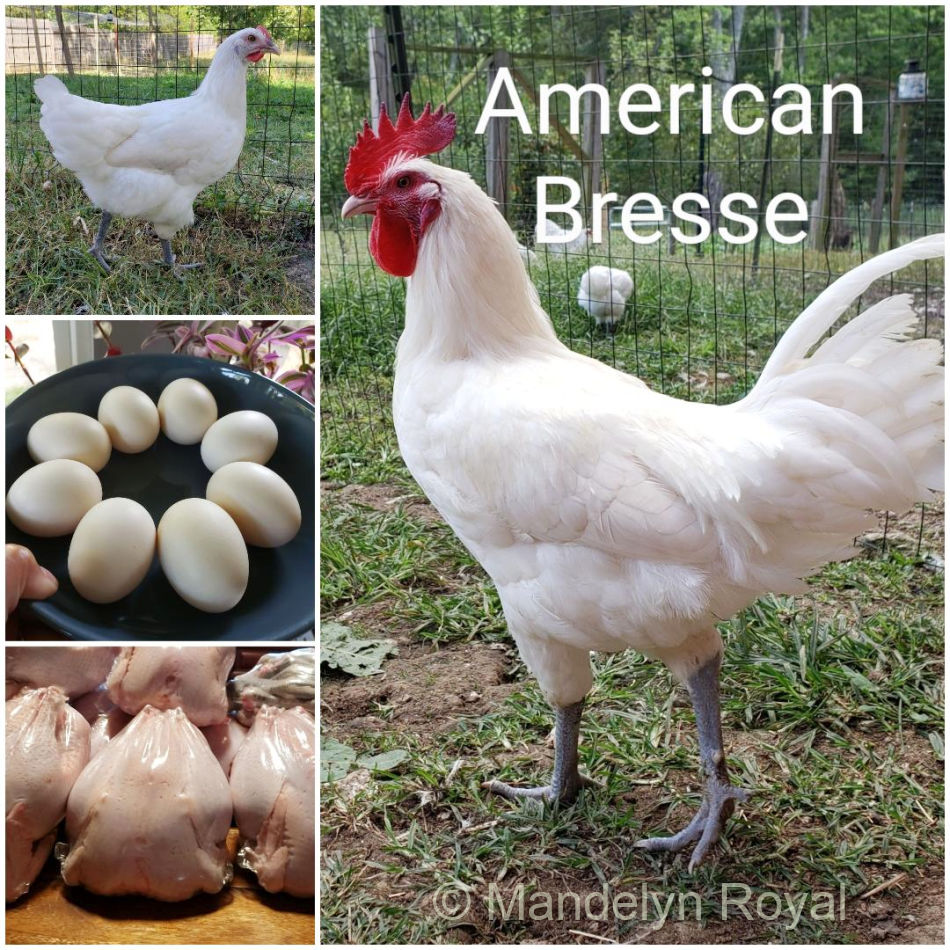
Photo credit: Mandelyn Royal.
